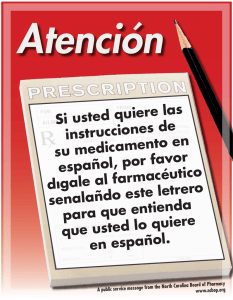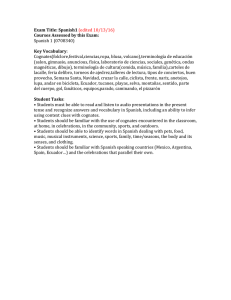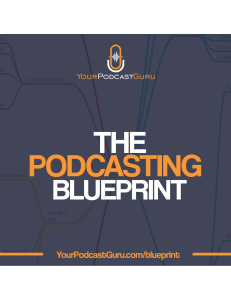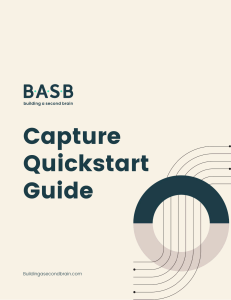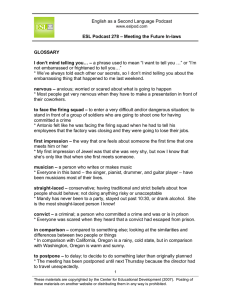How Spanish Teachers Use Notes in Spanish Materials with Their
Anuncio
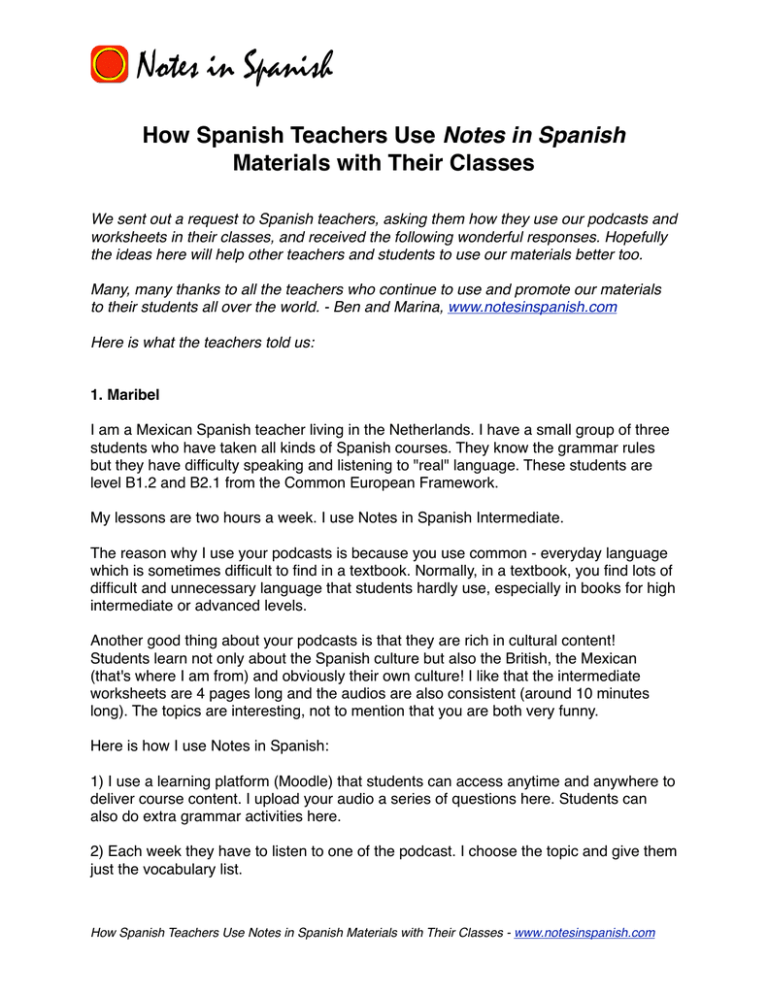
How Spanish Teachers Use Notes in Spanish Materials with Their Classes We sent out a request to Spanish teachers, asking them how they use our podcasts and worksheets in their classes, and received the following wonderful responses. Hopefully the ideas here will help other teachers and students to use our materials better too. Many, many thanks to all the teachers who continue to use and promote our materials to their students all over the world. - Ben and Marina, www.notesinspanish.com Here is what the teachers told us: 1. Maribel I am a Mexican Spanish teacher living in the Netherlands. I have a small group of three students who have taken all kinds of Spanish courses. They know the grammar rules but they have difficulty speaking and listening to "real" language. These students are level B1.2 and B2.1 from the Common European Framework. My lessons are two hours a week. I use Notes in Spanish Intermediate. The reason why I use your podcasts is because you use common - everyday language which is sometimes difficult to find in a textbook. Normally, in a textbook, you find lots of difficult and unnecessary language that students hardly use, especially in books for high intermediate or advanced levels. Another good thing about your podcasts is that they are rich in cultural content! Students learn not only about the Spanish culture but also the British, the Mexican (that's where I am from) and obviously their own culture! I like that the intermediate worksheets are 4 pages long and the audios are also consistent (around 10 minutes long). The topics are interesting, not to mention that you are both very funny. Here is how I use Notes in Spanish: 1) I use a learning platform (Moodle) that students can access anytime and anywhere to deliver course content. I upload your audio a series of questions here. Students can also do extra grammar activities here. 2) Each week they have to listen to one of the podcast. I choose the topic and give them just the vocabulary list. How Spanish Teachers Use Notes in Spanish Materials with Their Classes - www.notesinspanish.com 3) Using Google forms I make a series of comprehension questions which have to be answered in advanced to prepare them for the lesson. These are open-ended questions to help students get the essence of the audio text. For example, this is a link to one of the questionnaires I wrote for the podcast over "Mi pueblo".https://docs.google.com/ spreadsheet/viewform?formkey=dEZsVE5fZGF2cXdscU9oWFNxRVItZUE6MQ#gid=0 Students can listen as many times as necessary to answer those questions. 4) During the lesson. Students bring notes and some questions of words or expressions that they didn't understand while they were listening. This is very motivating because they are looking for information that they really want to know and thus, this makes learning memorable. I give them the transcript and we listen to the podcast again. After some important chunks of information I stop the audio and then we discuss what is being said. Sometimes I focus on the grammar for example, why you used the indefinido and not the imperfecto; sometimes I focus on fixed expressions or collocations; sometimes we focus on the content and discuss and compare the situations to the student situations, and so on. We move from chunk to chunk until the end of the podcast. We have a lot of fun sometimes because students may have listened to or understood something completely different to what was written in the transcript. For example, going back to the podcast on "Mi pueblo", my students didn't know what a "mango de una cazuela" was and they taught that Ben's hometown had the shape of a mango. These kinds of funny situations! Or when you mention the "Rio Támesis" they thought it was a totally unknown river and when I mentioned that it was the Thames everybody had to laugh. The "error de Ben" or "error de Marina" sections are also very helpful because no matter how good you can speak a language (like Ben does) there is still room for errors and this creates authentic communication. 5) Finally, once we've covered all the transcript, I ask them to relate the same topic to their personal life. For example, now the students can say anything about their hometown because they have keywords and expressions to do it. 6) As homework they have to write something about the topic that was discussed in class. After three lessons, we review some of the key words and expressions that they learned in previous lessons to activate their language a bit more and to help them internalize the newly learned material. How Spanish Teachers Use Notes in Spanish Materials with Their Classes - www.notesinspanish.com This is the third course with this group of students. In the first course I also used a podcast from "100 mujeres en Conflicto" and then in the second course I used "Ben y Marina" for the first time and when I asked them what they wanted to do for the third course they unanimously said "Ben y Marina". 2. Heather Hello!! In my Spanish 5 AP class we do one podcast per Quarter. The theme of the podcast has to do with a current chapter theme. We go to our language laboratory and I give them a sheet of paper with instructions and comprehension questions. Students can listen at their own pace and they can pause and rewind if needed. Once they are finished, I collect their papers and grade them as if it were a quiz. Thanks! 3. Jane I teach Spanish to adult learners and regularly set Notes in Spanish as homework. I listen, write down a few comprehension questions and then send my students off to listen themselves. I do feel a bit guilty as I am not paying you any money for this and we all love the material. I also download your advanced podcasts and listen to them as I am dog walking to keep my Spanish up to date. AND all my more advanced students have got the Super Simple Subjunctive Rulebook [ed. free when you sign up for our newsletter] (which we have decided is an oxymoronic title) but it is great as it is another way of looking at the subjunctive. Keep up the good work. 4. Urania Yo he usado por mucho tiempo sus maravillosos podcasts en mi clase de intermedio en particular. Lo que hago es que les asigno un podcast a los estudiantes para que lo escuchen de tarea. Luego les digo que les haré unas 4 o 5 preguntas de comprensión para ver si entendieron lo escuchado. También cubro vocabulario nuevo que escucharon pero no entendieron y trato que ellos mismos lo decifren por el context. Para los estudiantes con aprendizaje visual les es algo difícil esta tarea pero para la mayoría es un reto que están dispuestos a tomar. Una vez un señor mayor me dijo que "se había enamorado de la voz de Marina y por eso los escuchaba" eso me parecio interesante. How Spanish Teachers Use Notes in Spanish Materials with Their Classes - www.notesinspanish.com 5. Linda I have been using the podcasts and worksheets in my classroom (Sp.1-4) for the last 3 years and my students love them! One day a week is "podcast" day so it is sort of like our language lab. Last year my 3's and 4's challenged me to devote an entire month to a podcast a day to see if their Spanish improved. After getting admin approval, we launched our project. They were required to also attend 2 intercambios a week in my classroom with 4 other students at a time....using the weeks' podcasts as our topics for conversation. It was wonderful to see how much their ability to comprehend and communicate improved! If I had my way, I would ditch the textbook curriculum and just use the wonderful materials that you have worked so hard to produce! 6. Toby Hi. I am hs spanish teacher in Derry, New Hampshire. My students have been using Notes in Spanish for years. The intermediate and advanced are great for my 3rd year and 5th year students. We all listen to your intro podcast (intermediate #1) and then I assign 1 per month to listen to. Students write a summary, a reaction, a list of new terms, corrections that Marina makes to Ben. I am a huge fan. One of my colleagues bought a set as well. Ps. My students love Marina, La Gata 7. Jeff ¡Muy buenas! Llevo 13 años enseñando español en una escuela secundaria, y desde 2004 he tenido la suerte de dar la clase de "Español V honores", que trata de historia, cultura, y civilización ibérica. Descubrí vuestro maravilloso podcast en iTunes hace cinco o seis años y por un rato sólo lo aproveché en uso privado, pero después lo juntó con otras fuentes multimedia y ahora lo uso varias veces en mis clases avanzadas. En especial para Español V, lo puedo aplicar en varias secuencias de estudios. Por casualidad hemos empezado un nuevo "unit" la semana pasada que enfoca en Andalucía, y pienso volver a utilizar el podcast titulado "gitanos" conjuntamente con un cortometraje que tengo en el DVD para la película "Vengo". También he usado uno que habéis titulado "Vacaciones" y fragmentos de otros, incluso para darles ejercicios de práctica a mis alumnos de AP Spanish Language, el curso más avanzado que se ofrece en nuestro colegio. How Spanish Teachers Use Notes in Spanish Materials with Their Classes - www.notesinspanish.com Por cierto, les había dicho a mis alumnos del curso 2007-2008, antes de viajar con 20 de ellos a España en marzo, que tal vez os escribiéramos para ver si podríamos reunirnos con vosotros para un café en Madrid, pero un viaje con 20 o 25 chavales es un caos y no pudimos. Quizás para la próxima aventura. Thanks for the years of great podcasting, and I wish you continued success in the wonderful work you're doing! 8. Graeme I have a few ways that I use the Notes in Spanish materials in my classroom. I find them too long to be practical, so I pull a one or two minute (depending on the class) segment from the conversation - I usually edit quite heavily and mostly have to shorten Ben's paragraphs (sorry Ben!) That's because it is easier for them to follow a conversation if there are fairly short exchanges and roughly balanced between the two speakers. It creates a rhythm that they lock into unconsciously. I give the class a clue by sharing some of the words and phrases that they will hear that gives them something to actively listen for. Once they have heard those, they usually have a good gist of the conversation and will have come up with other things that they have heard for themselves. Then, very often I will give them the script but with certain phrases missing. Their job is to hear/guess/calculate/ what is missing. If they find a particular phrase difficult to hear, I will guide them from the surrounding conversation, and if they still aren't getting it, tell them in English so they can translate and then see if what they have matches (gap analysis). If not, theirs may be wrong or just different. Then I like them to pick certain phrases that they could use in conversation and make various changes to tenses and vocabulary. Basically using one of your sentences as a template and then changing the segments to make new and original ideas based on your structures. Mostly we will extend this into creating conversations between themselves based on the words and structures they have just seen and heard. Finally, I point out the 'non vocabulary-specific' stuff like the buenos and the pueses! They can lift these and slot them into their next Spanish conversations. There is often so much material in NIS podcasts that I can use that as a topic for the month, coming back to another part of the conversation in a later lesson. How Spanish Teachers Use Notes in Spanish Materials with Their Classes - www.notesinspanish.com 9. Mark We love your materials and have purchased the worksheets. I will use these compound words to add to my list for intermediate Spanish where we expand on the use of the (in)definite articles: generally speaking compound words use the masculine singular articles 'el' or 'un'. 10. Janet Hi! I’m a Spanish teacher from Colombia. Love the audios! I teach to adults in the community and plan on offering Spanish conversational classes in the Spring. Students will cycle to your audios and discuss topics at the end of our riding sessions. Keep up the GREAT work Ben and Marina! Cheers from Florida, USA! 11. Jennifer I love your podcasts and I recommend them to anyone and everyone that I teach. I have specifically used your podcasts in lessons on occasions, but it involves the learner in buying your materials and studying them outside the lesson. We listen again in class, they sometimes read the transcript aloud, do the worksheets and study the vocab, but more importantly we go on to discuss the topic afterwards. I believe the materials are better suited to self study, but for the more able it is possible to listen at home and discuss the issues etc in class. The scope to learn real Spanish as opposed to formal textbook Spanish is one of the many benefits, but your relaxed and natural delivery is not to be underestimated. 12. Paula I assign your Intermediate podcasts to my high-school Spanish IV and V students, to develop their listening skills. I give my students a study guide consisting of 10-12 questions they should focus on, and tell them to listen at least five times to the podcast over the course of one week. If I don't give them focus questions, they get too overwhelmed and give up, but they do well if they're listening for specific information. For example, for #2 Mitos I ask them where your conversation takes place and why, what five myths you discuss and whether they're true or not, what Cava Baja is and where it is, what year Spain changed to the euro, what day of the week it's common for young people to party all night, and what "empalmar" means. How Spanish Teachers Use Notes in Spanish Materials with Their Classes - www.notesinspanish.com At the end of the week I may give them a quiz on the focus info, or we may just discuss the podcast in Spanish. They enjoy them - as long as I give them study guides! I put a link to your website on my class page. 13. Martha I have been helping my students improve their listening skills as well as learn more about people, topics and themes from your conversations on "Notes in Spanish". I ask students to listen with the intention of being able to summarize what they have learned and then I give them a short quiz to gauge their comprehension. In the past, I have purchased sets of transcripts to use to create the quizzes, but not for all of the podcasts. I find your podcasts really good for helping students improve their listening skills, in particular. Many thanks again for all the wonderful feedback! - Ben and Marina, www.notesinspanish.com How Spanish Teachers Use Notes in Spanish Materials with Their Classes - www.notesinspanish.com



